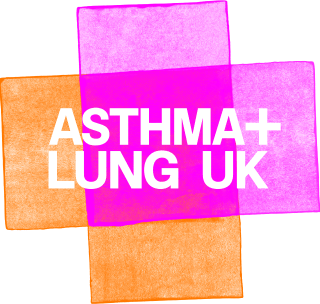- Asthma + Lung UK calls for urgent action to reduce preventable asthma deaths as new report shows deprivation, air pollution and poor housing conditions are common factors in child asthma deaths
- Charity says new asthma guidelines must be properly implemented and that the NHS 10-year plan is an unmissable opportunity to prioritise lung health
- Tackling underlying health inequalities that put the most vulnerable at risk is vital, with children from the most deprived communities most at risk of dying from an asthma attack.
A leading lung health charity is calling for the government to commit to urgent action to reduce preventable asthma deaths, as a new report shows that children from the most deprived communities in England are four times more likely to die from an asthma attack than those from the least deprived.1
Asthma + Lung UK, who were part of the advisory working group for the National Child Mortality Database Report on child deaths caused by asthma2, say that its findings expose the inextricable link between poor lung health and deprivation, with more than half (56%) of the children who died coming from the poorest communities.3
The charity is calling for respiratory health to be included as a key part of the 10-year health plan for the NHS. They want to see decisive measures to improve asthma care, ensuring everyone has access to the vital basic care they need and to tackle the underlying causes of health inequalities, to put an end to children dying from asthma.
The report reviews the deaths of 54 children in England who died due to asthma between 1 April 2019 to 31 March 2023 – one child every four weeks. The report’s findings showed that well-known risk factors for asthma attacks were common in a high proportion of the deaths, including overuse of reliever inhalers, emergency hospital admissions, and exposure to air pollution and cigarette smoke.
Nine out of ten (87%)4 of the children had three or more reliever (SABA) inhalers dispensed in the year before their death – a sign of poorly controlled asthma – with half of them having 12 or more.5 Two thirds (65%) had attended an emergency department or had an emergency admission in the year before death6. One asthma attack is an indicator of the risk of another, possibly more severe, attack.
The report also shows that all the children who died lived in areas with air pollution above levels recommended by the World Health Organization (WHO) 6, while smoking by family members was recorded in nearly half (43%) of the cases, more than three times the proportion of adults who smoke in the UK (13%).7 Second-hand smoke and air pollution are both know risk factors for asthma.
The UK has the worst death rate in Europe for lung conditions8 and they are more closely linked to inequality than any other major condition – this is partly because poorer communities are often in urban areas with higher air pollution, living in damp, poor quality housing, and they are also more likely to smoke than those living in affluent areas.
Asthma + Lung UK says there is a pressing need to do more to protect the 1.75 million children in England who live with asthma.9 They are calling on the government to ensure proper implementation of the new UK-wide asthma guideline10, so that children with asthma are kept well and out of hospital by delivering good year-round basic care in the community, including accurate diagnosis and annual reviews that include an inhaler technique check and written action plan. The guideline also recommends a review by someone trained in asthma care after every severe asthma flare-up. They charity says it’s also vital to tackle underlying causes and risk factors, including setting ambitious air pollution targets in line with World Health Organization targets and providing smoking cessation services.
Sarah Sleet, chief executive at Asthma + Lung UK, said: “A child dying from asthma every month is devastating and unacceptable. More than a decade after the National Review of Asthma Deaths11 found that two thirds of asthma deaths are avoidable, people with asthma are still not getting the basic care they need and those living in the most deprived parts of the country are most at risk.
“Bridging this health gap will only be possible if politicians commit to preventing poor lung health in the first place. This means action to cut smoking rates, tackle air pollution, and address issues such as poor housing. The upcoming 10-year plan for the NHS is also an unmissable opportunity to prioritise lung health and ensure that everyone with asthma is getting the care they need to keep them safe and out of hospital. We need to see urgent action to significantly reduce preventable asthma deaths in children and young people through improvements in diagnosis, treatment, innovation, and care.”
“The deaths of the children recorded in this important new report are a heartbreaking warning we can’t keep ignoring: if we don’t do more to combat the complacency around asthma, thousands of children will continue to be at risk.”
Dr Andy Whittamore, clinical lead at Asthma + Lung UK, said: “Every week I speak to families who are powerless to change the things making their child’s asthma worse, such as living in damp, mouldy housing, or near busy polluted roads. For children from the poorest communities, their chance of good health is determined almost before they’re born. That has to change.
“The new asthma guidelines offer some hope. Recommendations for better treatments and closer follow-up after a flare-up have the potential to keep children with asthma safe. But without adequate funding and an NHS workforce fully upskilled in asthma care, properly implementing them will be impossible.”
“As healthcare professionals we play a vital role – every interaction with a patient is an opportunity to reinforce the importance of a child taking their preventer medicine, having an asthma action plan and to help families to understand the importance of taking asthma seriously.”
Professor Ian Sinha, Consultant Respiratory Paediatrician, said: “We should be ashamed that children in the UK are dying from asthma. These are preventable deaths. This comprehensive review by the National Child Mortality Database is a wake-up call, but how many more reports—like those from the National Respiratory Audit Programme, Asthma and Lung UK, and the National Review of Asthma Deaths—must we produce before action is taken? The systemic complacency around respiratory health in the UK has cost children their lives, and will continue to do so if we ignore the glaring gaps in care and services. The new unified national asthma guidelines offer hope, but without the right structures, children will fall through the cracks. The time for sticking plasters is surely over.”
If someone is using their reliever inhaler three times a week or more, it’s a sign of untreated inflammation in their airways and it’s really important for them to make an appointment with their GP, nurse or pharmacist to discuss treatment options. You can also give the Asthma + Lung UK helpline a call on 0300 222 5800 or get information from our website at asthma.org.uk/advice/inhalers-medicines-treatments/.
-Ends-
About the National Child Mortality Database (NCMD)
The National Child Mortality Database (NCMD) was established on 1 April 2018 with the aim of reducing premature mortality by collecting and analysing data on all deaths in children in England, aged between birth and their 18th birthday. The Programme is commissioned by the Healthcare Quality Improvement Partnership (HQIP) and is funded by NHS England, it is led by the University of Bristol, in collaboration with Anna Freud, UCL Partners and the software company QES.
Report available 12 December at 00:01 at ncmd.info/asthma
References
1 Death rate was four times higher for children living in the most deprived neighbourhoods of England (2.66 per 1 million children) compared to the least deprived (0.68 per 1 million children)Child deaths due to Asthma or Anaphylaxis, National Child Mortality Database Programme Thematic Report, Data from April 2019 to March 2023.
2, 3, 4, 5 Child deaths due to Asthma or Anaphylaxis, National Child Mortality Database Programme Thematic Report, Data from April 2019 to March 2023.
6 What are the WHO Air quality guidelines?
7 Adult smoking habits in the UK - Office for National Statistics
8 Eurostat data for 2011-2018, Causes of death - standardised death rate by region of residence. Available at: https://ec.europa.eu/eurostat/databrowser/view/HLTH_CD_ASDR2__custom_2053067/default/table?lang=en
9 Prevalence data via Health Survey for England 2018 (available here: https://digital.nhs.uk/data-and-information/publications/statistical/health-survey-for-england/2018). Population data via Office for National Statistics estimates (available here: https://www.ons.gov.uk/peoplepopulationandcommunity/populationandmigration/populationestimates/datasets/populationestimatesforukenglandandwalesscotlandandnorthernireland).
10 Overview | Asthma: diagnosis, monitoring and chronic asthma management (BTS, NICE, SIGN) | Guidance | NICE published 27 November 2024.
11 The National Review of Asthma Deaths (NRAD): Confidential enquiry report 2014 – HQIP





